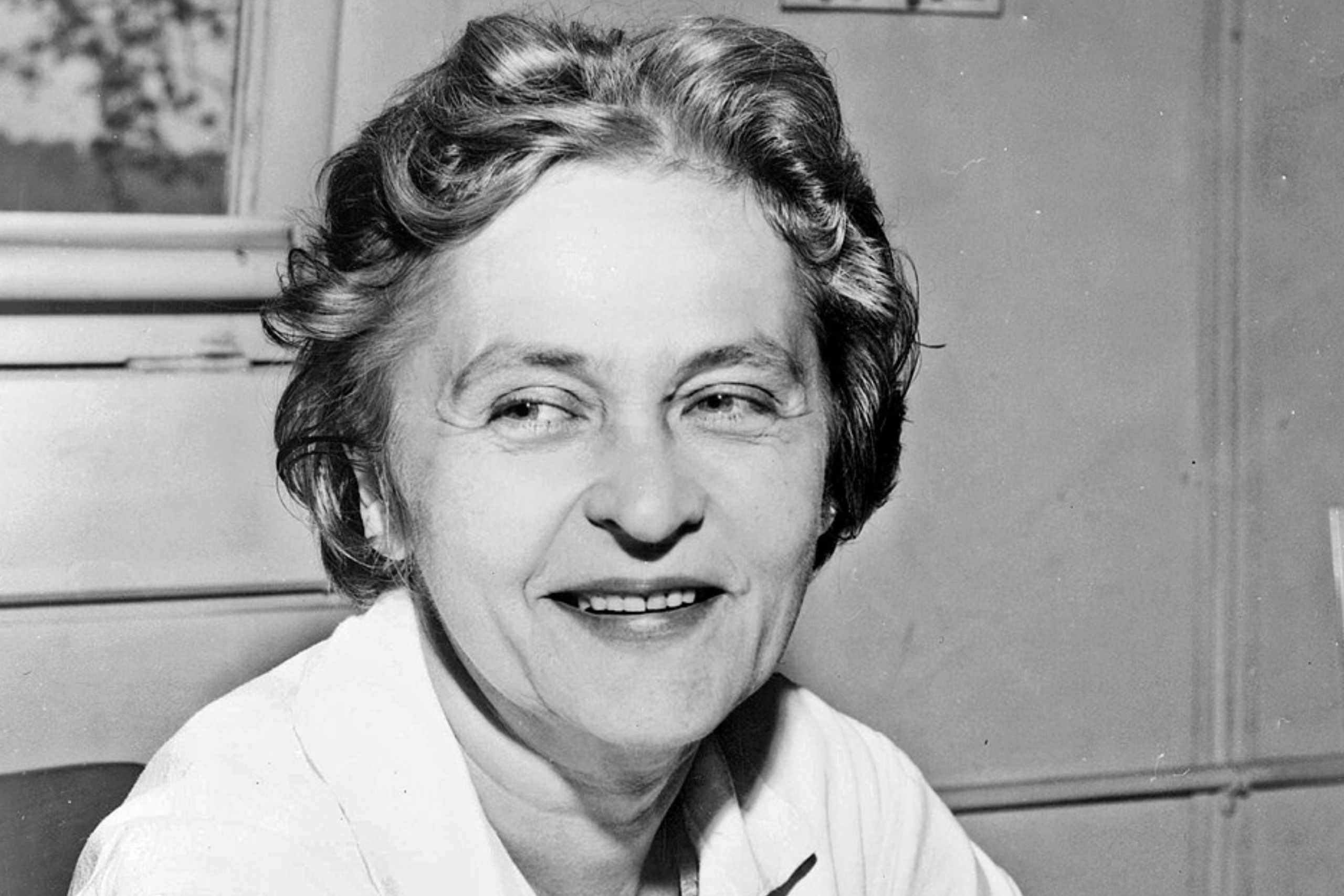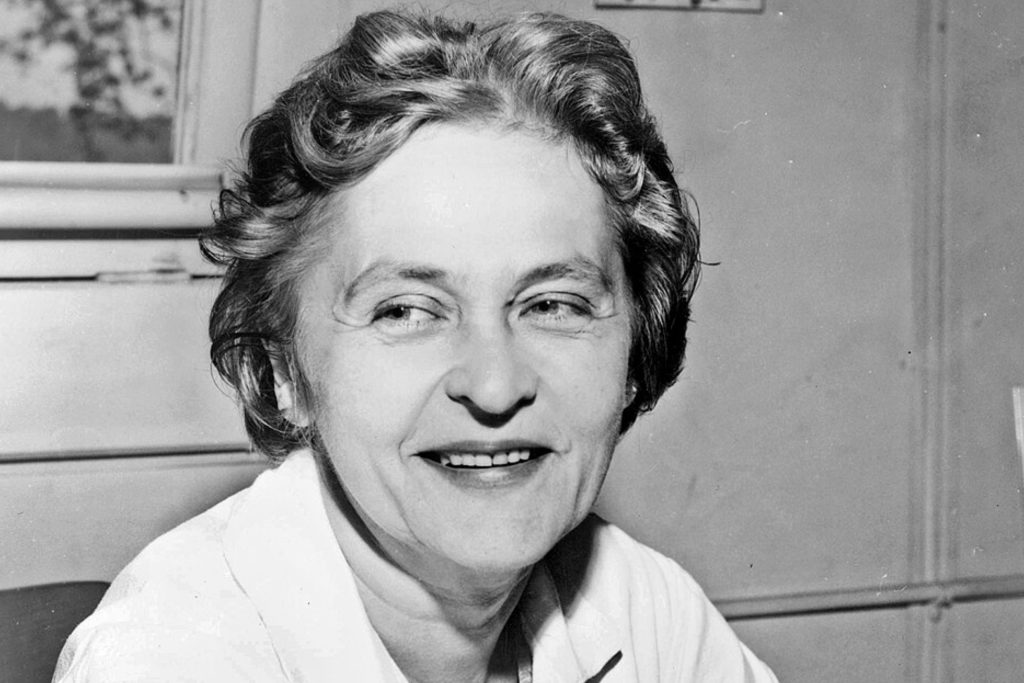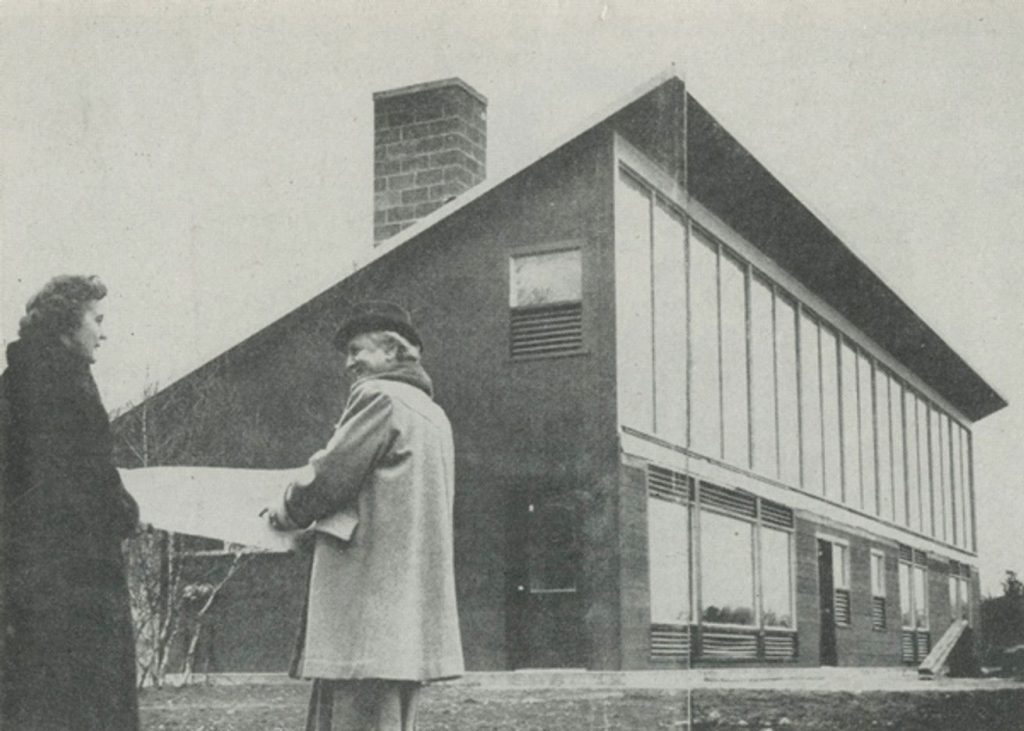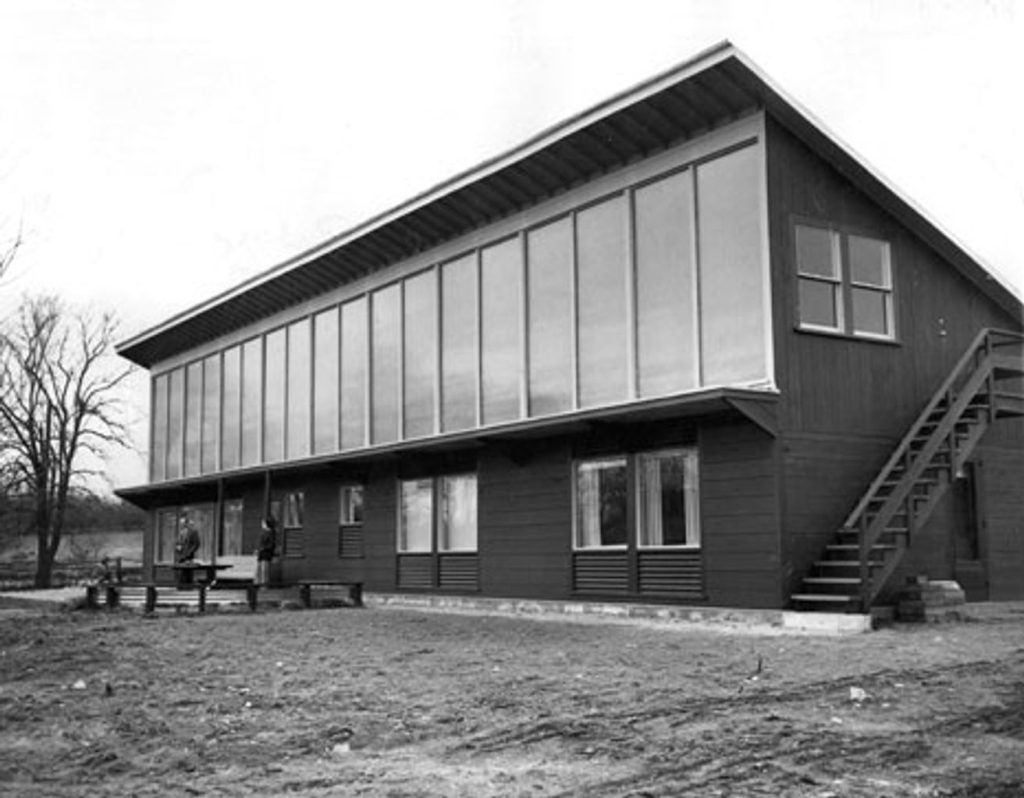Your cart is currently empty!
She Built a House That Stayed Warm in Winter Using Only Sunlight and Salt

In the depths of winter, warmth without fire or fuel might sound like a page from science fiction. At sea, the thought of turning sunlight into safe drinking water feels just as improbable. Yet, for Mária Telkes, these scenarios were neither speculative nor distant. They were tangible achievements, realized decades before sustainability became a household term.
Often referred to as the “Sun Queen,” Telkes dedicated her career to harnessing solar power in ways that were as practical as they were visionary. From designing solar-heated homes to creating life-saving water distillers for use in remote or emergency conditions, she demonstrated that innovation is not a matter of waiting for future technology but of applying existing resources with ingenuity. Her legacy serves as a reminder that the same sun that fueled her breakthroughs still offers untapped potential today.
The Woman Who Turned Sunlight Into Shelter
In the postwar years, America thrived on an industrial boom, but its progress came with a visible price: smoke-filled skies, soot-stained buildings, and a heavy reliance on coal and oil. The idea of breaking free from those fuels was, for most, unthinkable. In 1948, Hungarian-born scientist Mária Telkes thought otherwise. She transformed that vision into reality, constructing a home in Massachusetts that could stand warm against a New England winter without burning a single piece of coal.

Telkes, soon nicknamed the “Sun Queen,” earned the title not through ceremony but through achievement. Working with architect Eleanor Raymond, she devised a system that captured the sun’s heat and stored it in Glauber’s salt, a common chemical with the rare ability to hold and release warmth over time. The result was more than a technical triumph. It was a statement that innovation could be functional and beautiful, and that sustainable living was not a distant ideal but an attainable reality. Her work still stands as evidence that the tools for a cleaner future have been within reach for generations.
When Innovation Met the New England Winter
In the late 1940s, an experimental home in Dover, Massachusetts, began drawing crowds. Its claim was bold: a house that could keep its residents warm through a Massachusetts winter without burning a single ounce of coal or oil. The project brought together scientist Mária Telkes, architect Eleanor Raymond, and philanthropist Amelia Peabody, united by a shared belief that sunlight alone could power comfort in even the harshest cold.

The heart of the design was a south-facing wall of glass, capturing sunlight and directing it to an array of metal drums filled with 3,500 gallons of Glauber’s salt. This chemical could absorb heat during the day as it melted, then release that heat slowly at night as it solidified. The result was a system that, in theory, could maintain steady warmth for days even through cloudy spells. For two winters, members of Telkes’s own family lived in the house, testing its promise.
Media coverage was swift and enthusiastic. Popular Science declared the house “might represent a more important scientific development than the atom bomb,” while local curiosity brought streams of visitors. Andrew Nemethy, who grew up in the home, recalled it drew “3,000 visitors — society matrons, club members, reporters, and curious civilians — until tours were suspended.”

The reality was more complex. Circulating fans increased electricity use, and over time, the salt storage system began to fail. Stratification caused the material to separate into layers, corroding the drums until they leaked. Nemethy remembered one particularly harsh season: “After week-long strings of cloudy days, indoor temperatures sank to panic levels. My mother complained, and we soon had electric heaters in all the rooms.”
Despite its flaws, the Dover Sun House remains an emblem of creative risk-taking in renewable energy. For a brief moment, it proved that a home could live in harmony with nature’s oldest energy source, challenging the conventions of its time and hinting at possibilities we are still pursuing today.
Beyond the House: Innovation for Liberation and Everyday Life
Long before solar power became a commercial industry, Mária Telkes was proving its worth in the most urgent of settings. During World War II, she developed a portable solar distiller that could mean the difference between life and death for pilots or sailors stranded at sea. By harnessing sunlight to evaporate seawater and condense it into drinkable water, the device worked without a drop of fuel. Thousands were supplied to the U.S. military, and the same principle offered hope for isolated communities where wells had run dry.
Her ambitions extended beyond survival to daily living. In 1953, backed by a Ford Foundation grant, Telkes designed a solar oven that could reach temperatures of 200°C using nothing more than mirrors, glass, and insulation. Affordable, smoke-free, and easy to construct, it offered a safer, cleaner way to cook in rural areas where gathering fuel was costly and time-consuming.
Two decades later, her expertise was central to Solar One at the University of Delaware, a pioneering home that generated both heat and electricity entirely from sunlight. It demonstrated, in practice, that a house could run year-round without reliance on fossil fuels.
Through these innovations, Telkes showed that the sun’s potential went far beyond illumination. Whether on a life raft, in a village kitchen, or in a state-of-the-art research home, she treated renewable energy not as an abstract goal, but as an immediate, practical tool for human wellbeing.
Off Grid Power Transforming Lives
In parts of the world where electricity is not a given, the arrival of light after dark can feel like a turning point in history. It is the moment when classrooms can stay open later, when vaccines can be kept cold, when small businesses can grow without the hum of a diesel engine in the background. Today, solar technology is making these moments possible in places far from traditional power grids.
In the Peruvian Amazon, deep within Alto Mishagua, an Indigenous-led initiative called Aylluq Q’Anchaynin,“ the energy of the community” in Quechua, has brought solar lighting to schools and internet access to villages that had never been connected. The impact is immediate: children study after sunset, teachers access resources online, and communities share knowledge beyond their geographic boundaries.
The story plays out differently in Goma, Democratic Republic of Congo. There, a 1.3 MW solar minigrid has become a pillar of daily life, powering water treatment plants, keeping phones charged, and sustaining local businesses. Its design is meant to last through instability, providing a dependable alternative to costly diesel generators and creating a blueprint for other conflict-affected regions to follow.
And in Mali’s village of Karan, solar mini grids are not just lighting homes, they are reshaping the local economy. Shops stay open longer, bakeries work through the night, and even gaming hubs have emerged, drawing young people together. Lower power costs mean more families can afford electricity, all managed by local entrepreneurs who ensure the benefits remain within the community.
The lesson is clear. Solar energy, when placed in the hands of the people it serves, becomes more than a technology. It becomes a form of independence, one that illuminates not only homes, but futures.
Bringing the Sun Into Your Everyday Life
Mária Telkes’s life’s work shows that innovation often begins with the small, deliberate choices we make each day, not only in the lab. You don’t need to invent the next great solar technology to live in harmony with the planet. These steps can bring a little more of the sun into your own daily routine.
- Pay Attention to Your Energy Use
Energy savings start with awareness. Take note of which appliances hum quietly in the background for hours at a time, which chargers stay plugged in overnight, and how many lights are left on in unoccupied rooms. By identifying these hidden drains, you can make targeted changes, such as unplugging idle electronics or switching to energy-efficient lighting, that save money and reduce waste with minimal effort. - Work With the Sun, Not Against It
The sun offers light and warmth at no cost, yet we often overlook it. In colder months, open curtains early in the day to let sunlight naturally heat your home. In the summer, draw blinds or shades during peak hours to keep rooms cooler without overusing air conditioning. Dry clothes on a line outdoors when weather allows; not only does it cut down on electricity use, but it also extends the life of fabrics. - Opt for Simple Over Complex
When faced with a need, consider the most straightforward, low-energy solution before turning to power-hungry tools. For example, walk or cycle for short errands instead of driving, or use a ceiling fan to circulate air before reaching for the thermostat. Simple choices often meet the same needs without the environmental or financial cost. - Support Renewable Energy Efforts
Even if you cannot install panels on your roof, there are ways to contribute to the renewable energy movement. Enroll in a community solar program if available, choose a green energy plan through your utility provider, or donate to initiatives that equip schools, clinics, or public spaces with solar power. Collective participation strengthens the transition toward cleaner, more equitable energy systems. - Share What Works
Change spreads faster through personal connection. If you discover a habit or small adjustment that lowers your bills or reduces your footprint, talk about it with friends, neighbors, or colleagues. Your experience can be the push someone else needs to begin their own journey toward sustainability. - Think About the Long Game
Every decision, from what we eat to how we travel, shapes the world we will leave behind. Ask yourself how your daily choices will look ten or twenty years from now. Will they contribute to depletion, or to renewal? Thinking long term transforms small, everyday actions into part of a bigger legacy.
The most profound changes often start quietly. The same sunlight that powered Mária Telkes’s groundbreaking inventions is shining today, ready to illuminate not just our homes, but our decisions. The question is: how will you use it?
Where the Light Falls
Every sunrise is an unspoken promise. Without condition, without pause, the sun arrives, spilling light over mountaintops, cities, and oceans, touching every life in its path. It asks nothing, yet gives everything.
Mária Telkes understood this better than most. To her, sunlight was not just a backdrop to our days; it was a raw, untapped force that could warm our homes, feed our families, and set entire communities free from dependence on fuels that pollute the air and drain the earth. She took what had always been there and asked the question no one else dared: What if we truly used it?
That question has not aged. We still stand in the same light that guided her work. We still have the means to turn it into power, security, and possibility. The tools are better, the knowledge deeper, the urgency greater. The only unknown is whether we will step forward and use them.
The light is here. It falls on all of us. The rest is up to what we choose to build beneath it.
Featured Image from Library of Congress Prints and Photographs Division under CC0 1.0 Universal
